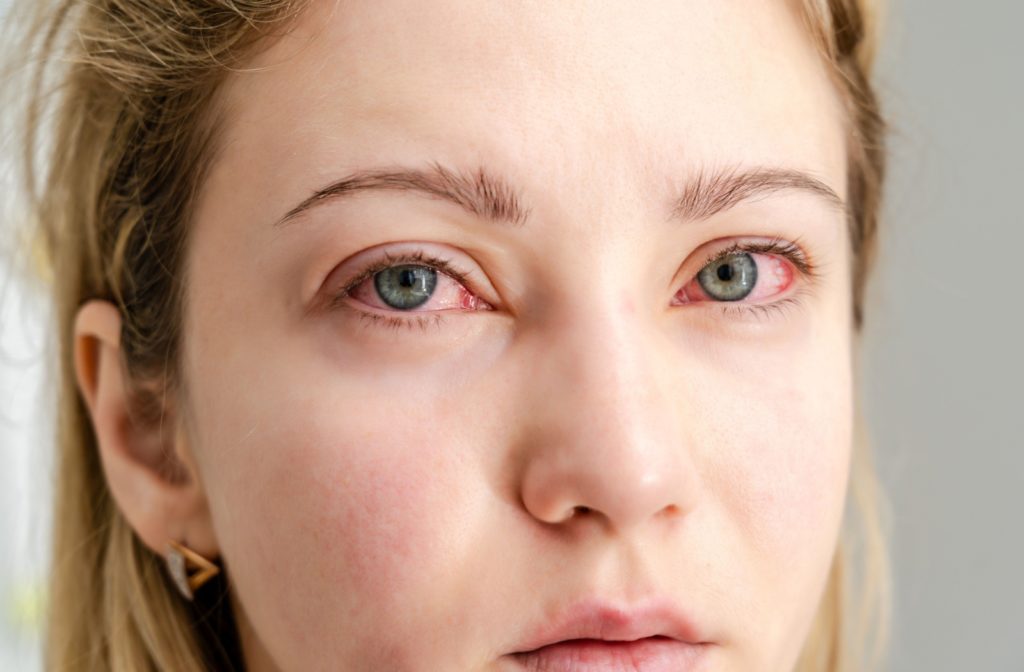Marijuana use is known to have clear physical effects on the body, with some of the most noticeable changes happening in your eyes. If you use marijuana, it’s not unreasonable to wonder if your optometrist can tell if you’re under the influence during an appointment. And while an eye doctor could detect signs of marijuana use, they typically could not definitively tell if you’re high during the eye exam.
Even if you’re concerned about a doctor noticing the signs of marijuana use, you should still attend all your recommended eye appointments. Your eye doctor isn’t there to judge your choices, especially with recreational and medical marijuana use being legal in many places now. They will examine your eyes and discuss your eye health and vision, offering their tailored and expert advice.
How Marijuana Can Affect the Eyes
Marijuana’s effects on the eyes are much more complex than simply making them red or glossy. Understanding these changes requires a closer look at how marijuana interacts with the body.
Red Eyes & Bloodshot Look
One of the most common and noticeable symptoms of marijuana use is bloodshot eyes. This occurs because tetrahydrocannabinol (THC), the active compound in marijuana, causes blood vessels in the eyes to dilate.
This dilation increases blood flow and reduces intraocular pressure, creating the characteristic redness that frequent users—or observant eye doctors—might notice.
Pupil Dilation & Reactions
Another effect of marijuana is the fluctuation in pupil size. While it’s often more subtle than the dilation caused by alcohol or certain medications, these minor changes in pupil behaviour can sometimes catch the attention of a skilled eye doctor, especially if they’re using specialized equipment that measures pupil reactions.
Changes in Eye Pressure
THC is known to temporarily lower intraocular pressure. Lower eye pressure is an effect that could be picked up during a detailed eye exam, especially if pressure-related conditions like glaucoma are a focus.
Dry or Glossy Eyes
Marijuana use can also cause dry eyes, making them appear glossy or irritated. This is due to its impact on tear production and hydration in the ocular tissues. While not a definitive indicator of being high, combined with other symptoms, it can contribute to the overall picture an eye doctor observes.
Ways Your Optometrist Could Detect Marijuana Use
Your eye doctor may see the signs of THC’s effects through several ways.
Eye Examinations & Technology
While the key focus is often on diagnosing and treating vision problems or diseases like glaucoma during a comprehensive eye examination, these tests inadvertently bring to light changes caused by marijuana use. Tests that may catch the signs of marijuana use include the following.
Pupil Response Tests
Eye doctors use light during an exam to observe how your pupils react. Changes in pupil behaviour—such as delayed or unusual responses—could potentially indicate altered states caused by substances like marijuana.
Eye Pressure Measurement
As a standard part of glaucoma screening, your optometrist can use tools like a tonometer to measure intraocular pressure. A significant drop in pressure could hint at marijuana use, but other factors like medications or health conditions could also explain this.
Slit Lamp Examination
This test uses high-intensity light and magnification to closely examine the eyes. Bloodshot eyes, irritation, or changes in tear quality might be visible during this procedure.
Can an Optometrist Tell If You’re Using Marijuana?
The short answer? Yes, but not definitively. Eye doctors might notice signs that align with marijuana use, such as bloodshot eyes, pupil fluctuation, or decreased intraocular pressure. But these symptoms are not exclusive to marijuana and could be caused by a host of other factors, such as allergies, fatigue, or medication.
Non-Specific Symptoms
Many of the effects marijuana has on the eyes overlap with other common conditions. Unless you openly disclose your use, an eye doctor might make an educated guess but can’t confirm it definitively.
Lack of Testing for THC
While some medical facilities can test for THC levels via blood or urine, routine eye exams are not designed for this purpose. The equipment and examination techniques used by most optometrists or ophthalmologists don’t directly detect marijuana use.
Ethical & Legal Considerations
Eye doctors, like all medical professionals, are bound by strict ethical guidelines and confidentiality laws. Even if your eye doctor suspects you’re under the influence, their primary responsibility is to provide you with quality care—not to judge.
It’s also worth noting that recreational marijuana use is legal in some places, adding another layer of complexity to the conversation.
Why Regular Eye Exams Matter—No Matter What
Whether you use marijuana recreationally, medicinally, or not at all, regular eye exams are crucial for maintaining overall health. Your eyes can reveal a lot about your body, from high blood pressure to diabetes, so keeping up with your appointments is essential.
If you are a marijuana user and concerned about its effects on your eyes, bring it up with your doctor. Transparency helps eye care professionals provide the best possible support.
Take Action for Your Eye Health
If you’ve been skipping your annual eye exam, consider this your sign to book one today. Whether you’re worried about marijuana’s effects or want to ensure your vision stays sharp, an eye doctor can help you stay on top of your eye health.Call our team at York Mills Eye Care today and book an appointment. Our experienced eye doctors are here to provide professional and personal care to keep your eyes healthy and vision clear.




